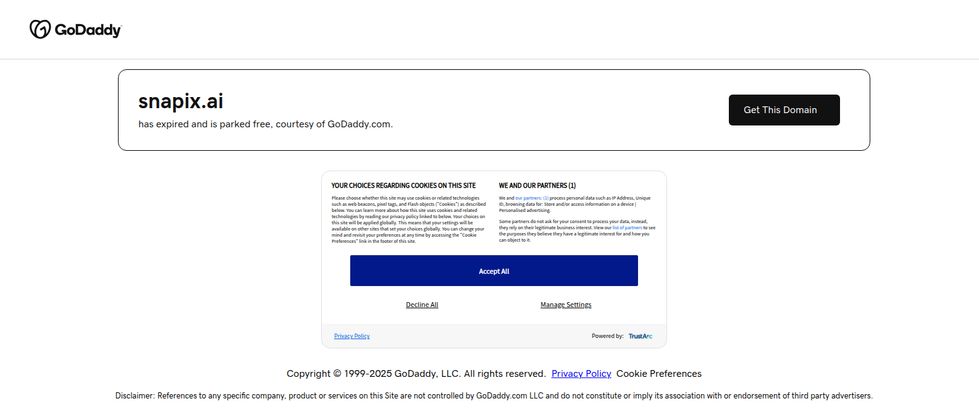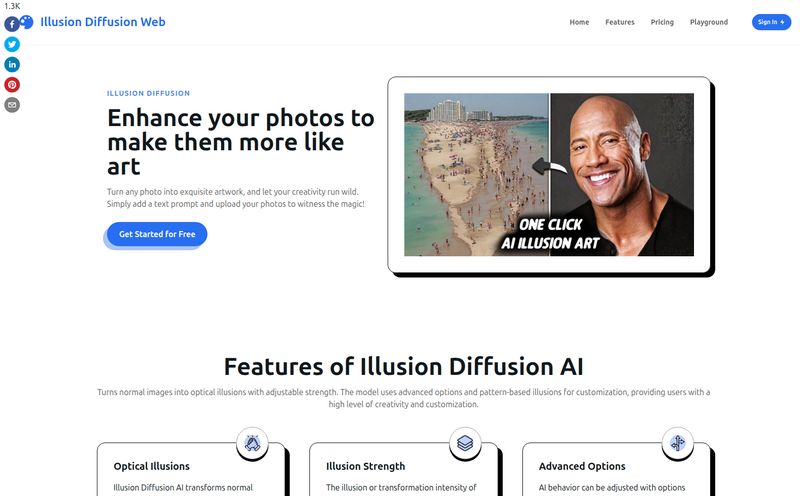Every week, my inbox gets flooded with the “next big thing” in AI. Seriously, it's a deluge. Another AI writer, another AI video generator, another AI tool that promises to organize my life (spoiler: it never works). But every so often, one catches my eye. A while back, that tool was SnapiX AI.
The pitch was simple, clean, and hit right at the heart of a common frustration for content creators, marketers, and, well, anyone with a smartphone camera. It promised to be an AI-powered photo editor that could bring your wildest ideas to life. Need to remove that tourist who walked into your perfect beach sunset photo? Done. Want to swap your boring office background for a chic Parisian café? No problem. It sounded great. Almost too great.
So, I did what any self-respecting SEO and tech nerd does. I bookmarked it, signed up for the beta or waitlist, and waited for the magic to happen. And then... crickets. Recently, I went to check back in, and what I found was, to put it mildly, a digital ghost town. The domain, `snapix.ai`, has expired. It’s now a parked page, courtesy of GoDaddy. A digital tombstone.
So what happened? Let's pour one out for a fallen soldier in the AI wars and investigate what SnapiX was, what it promised, and where it might have gone wrong.
The Seductive Promise of One-Click Perfection
Let's be real, most of us aren't Photoshop wizards. I can fumble my way around layers and masks, but it’s not pretty and it sure isn’t fast. The appeal of tools like SnapiX is their directness. They tap into that desire for instant gratification. The core features pitched were exactly what the market wants:
- AI Background Replacement: The ability to seamlessly cut a subject out of one photo and place it into another. This is the holy grail for product shots, social media profile pics, and creating memes, lets be honest.
- Remove Anything: This was the big one. An 'object eraser' that could intelligently remove unwanted elements—people, trash cans, photobombers, ex-boyfriends—from your images without leaving a horrible, blurry smudge.
The idea was to make complex editing accessible. You didn’t need a four-year design degree; you just needed an imagination and a mouse. It was part of that new wave of generative AI, similar in spirit to what Adobe's Firefly does with Generative Fill or what Canva offers with its Magic Edit. The goal is to turn you from a photo editor into a photo director.

Visit SnapiX
The Good, The Bad, and The Vaporware
In the fast-paced world of AI startups, an idea is only as good as its execution. Based on the information available during its brief time in the sun, SnapiX had some clear upsides but also some pretty significant red flags.
What Looked Promising
The main draw was its user-friendly approach. The interface, from what we saw, was clean and minimalist. It wasn't trying to be Photoshop. It was trying to be the opposite of Photoshop: fast, intuitive, and built for a single purpose. For a busy marketer or a small business owner who needs a quick product shot on a clean background, this is incredibly appealing. Time is money, and hours spent wrestling with the pen tool is time you're not spending on something else.
The AI-powered nature of it all meant that the heavy lifting was done for you. In theory, this would level the playing field, giving everyone access to high-quality image manipulation. A powerful concept.
The Cracks Begin to Show
Here’s where my professional skepticism started kicking in. I've seen this movie before. A flashy landing page, a big promise, and then… a reality that doesn’t quite match. The cons here tell a story.
First, the classic “beta has ended, now on a waiting list” maneuver. While this can be a smart way to manage server load and build hype, it can also be a sign that a product isn’t ready for primetime or that the user acquisition model is broken. How long is too long for a waitlist before people just move on? In the AI space, the answer is 'not very long'.
Then there's the reliance on AI itself. The promise of perfection often runs into the wall of weird AI artifacts. We’ve all seen the AI-generated images with people who have seven fingers or two elbows. While object removal has gotten very good, it's rarely flawless. Without manual refinement tools, you're at the mercy of the algorithm. Sometimes it's magic, sometimes it's a mess.
But the biggest issue for me was the business model. The site mentioned a token-based system, but the details were frustratingly vague. As a user, this is a huge red flag. How much does a token cost? How many tokens does it take to remove one object? Is changing a background one token or ten? This lack of transparency is a killer. I personally prefer a straightforward monthly subscription like Adobe's or even a clear pay-as-you-go model. Obscure token systems feel designed to confuse you into spending more. It’s a personal pet peeve, and it rarely ends well for the consumer.
Combine that with limited information on the AI models they were using, and you have a product that feels more like a black box than a reliable tool. Are they using a proprietary model, or just putting a slick UI on top of an open-source model like Stable Diffusion? We just don't know.
So, What Really Happened to SnapiX?
An expired domain is a pretty definitive end. It's not a 'site is down for maintenance' message; it's a 'we're not paying the bills anymore' sign. While we can only speculate, here are a few likely culprits:
- The Competition is a Beast: The generative AI space is not for the faint of heart. You're competing with giants like Adobe and well-funded, agile companies like Canva and Midjourney. They have massive resources, huge existing user bases, and are integrating these exact features into platforms people already pay for. It’s hard for a small, unknown startup to carve out a niche.
- Unsustainable Business Model: Running AI models is expensive. It requires a tremendous amount of computing power. If their unclear token system didn't bring in enough revenue to cover those costs, the runway gets very short, very fast.
- The Tech Wasn't There Yet: Maybe the product just wasn't good enough. If the AI consistently produced subpar results, word gets around quickly. Hype can't sustain a product that doesn't deliver.
My bet is on a combination of all three. SnapiX flew a little too close to the sun, with a promising idea but without the financial backing or technological moat to survive against the titans of the industry. It's a cautionary tale we see again and again in the tech world.
Frequently Asked Questions
- What was SnapiX AI?
- SnapiX AI was pitched as an AI-powered photo editing tool designed to make it easy for users to replace backgrounds and remove unwanted objects from their photos with minimal effort.
- Why can't I access the SnapiX website?
- The domain name `snapix.ai` has expired and is currently parked by GoDaddy. This indicates that the service is no longer active and the owners did not renew their ownership of the domain.
- What were the main features of SnapiX?
- The two primary features were 'Replace Background', which allowed you to swap out the scenery in a photo, and 'Remove Anything', an AI object eraser for cleaning up images.
- Are there good alternatives to SnapiX?
- Absolutely. For powerful, integrated features, Adobe Photoshop's Generative Fill is the industry leader. For ease of use and a more approachable platform, Canva's Magic Studio (including Magic Edit) is an excellent choice. Other standalone tools like PhotoRoom and Photor.io also offer similar object removal and background editing features.
- What is a token-based system for AI tools?
- A token or credit-based system is a pricing model where users purchase a certain number of credits. Each action, like generating an image or editing a photo, consumes a set number of these credits. The cost-effectiveness depends heavily on how the company prices its tokens and how many tokens each action requires.
A Final Thought on the AI Gold Rush
The story of SnapiX AI is a perfect microcosm of the current AI gold rush. There are fantastic ideas everywhere, but there are also a lot of digital prospectors who show up with a shiny pan and a big dream, only to find the river is too rough or already claimed by bigger operations.
It’s a reminder for us as users to be a little critical. A slick landing page doesn't always equal a sustainable product. And for every ten tools like SnapiX that vanish into teh ether, one or two will stick around and genuinely change the game. The trick is figuring out which is which. For now, SnapiX remains a ghost in the machine—a cool idea that, for whatever reason, just couldn’t make it in the real world.
Reference and Sources
- Adobe Firefly: https://www.adobe.com/products/firefly.html
- Canva Magic Studio: https://www.canva.com/magic-studio/
- Domain Status Check via GoDaddy: The `snapix.ai` domain was confirmed as expired and parked on GoDaddy's platform.



